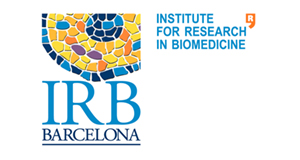Protein expression
GINYS-IRB-003
The Protein Expression Core Facility was founded to offer high-performance expression cloning and screening (HTP) activities in which many variations of a protein (e.g., can be performed in parallel. Alternatively, HTP activities they can be directed to the genome of a particular organism (or family of organisms) to clone and call expression many different proteins from a single organism.
In addition, the facility has the experience and equipment needed to produce and purify milligrams of protein from prokaryotic and eukaryotic expression hosts, currently E. coli, Sf9 (insect), and HEK293T or HEK293A (mammalian cells). Many of the protocols are automated, with the installation making full use of liquid handling robotics for HTP plate handling for small-scale expression screening (μg) and automated purification systems (Äkta Xpress) for larger-scale protein purification (mg).
The facility also provides many high-quality reagents for protein cloning and expression, such as competent bacteriophage-resistant E.coli strains, specialized expression media, and recombinant enzymes. If necessary, the installation can also offer custom vector cloning and modification services.
Services
- Custom HTP cloning to generate expression vectors
The In-Fusion ™ restriction and binding enzyme-independent cloning technique allows the precise production of user-defined constructs, including the production of mutant, chimeric, and bicistronic constructs (E. coli only). There are many pOPIN1 or pPEU In-Fusion ™ – prepared vectors available – click here to download the latest list or contact us. Most of these vectors allow expression in E.coli (T7-based promoters), mammalian cells (immediate early CMV enhancer fused to chicken ß-actin promoter), or insect cells. (p10 promoter and intracellular recombination of ORF 603 and 1629). with baculoviral genome). The researcher is generally expected to provide the “template” for cloning operations, but the facility can also obtain plasmids or cDNA. - Expression screening in E. coli
A microtiter plate of 96 expression clones (user facilities or derivatives) in E. coli can be examined in approximately one week. Currently, the screen consists of the use of two expression strains, with the expression in each strain being tested using IPTG and self-induction methods. Strains of E. can be incorporated. additional coli (DE3) to the screening process if necessary.
HTP plasmid minipreparation: 96 E. pellet minipreparations. coli in MTP format in less than two hours - Expression of personalized proteins and purification of intracellular or secreted proteins on a milligram scale
A minimum of two purification steps generally provide us with protein purities above 95% for most proteins. Currently available hosts for large-scale expression cultures are E. coli and HEK293T cells and we are currently introducing large-scale insect cell cultures to our list of services. The HEK293T cell system has been used to successfully produce milligram amounts of secreted glycosylated proteins. - Production of selenium-methionine-labeled proteins in auxotrophic or prototrophic E. coli strains for the determination of crystallographic structure
Our bulk purchase of selenium-methionine produces very competitive prices for our E.coli-labeled proteins. - Production of 15N, 13C or deuterium-labeled proteins in auxotrophic or prototrophic E. coli strains for NMR
- Expression screening in mammalian cells (e.g. HEK293T).
A microtiter plate of 96 expression clones (derived from the facility or user) can be examined in the cells in 1-2 weeks. - Production of recombinant baculoviruses using pOPIN or pPEU vector suites or from existing constructs (e.g., pFastBac). Recombination in the cell (Sf9) of the pOPIN and pPEU vectors with the baculoviral genome is rapid and bottomless.
His-tagged recombinant proteases 3C (PreScission), TEV, and SUMO are available for removal of the fusion “partners” of the expressed proteins.
We also expect recombinant glycosidases PNGase and EndoF1 to be available for the removal of sugar fragments from glycosylated recombinant proteins prior to crystallization. The facility also obtains many high-quality reagents, ranging from specialized E. coli-competent cell strains and reagents for protein expression to labeling and cloning reagents for use. of individual researchers. Purchasing reagents through facilities is generally very cost effective.
Staff
Projects
Title:
P4EU: Protein production and purification
Reference:
https://p4eu.org/
Funding Organism:
EU
Status:
Executing
Publications
Quality control of protein reagents for the improvement of research data reproducibility
Nature Communications
Nature Communications
On the origin of the selectivity of plasmidic H-NS towards horizontally acquired DNA: Linking H-NS oligomerization and cooperative DNA binding
Journal Of Molecular Biology
Journal Of Molecular Biology



